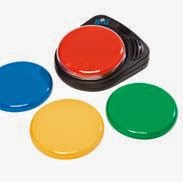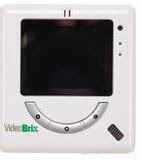My group (Donalda and Keisha) was assigned number 7 where we had to find technology for students with autism, the following is some of what we looked at.
au·tism
a mental condition, present from early childhood, characterized by difficulty in communicating and forming relationships with other people and in using language and abstract concepts.
AT for students with Autism
As we are well aware, AT users are as distinct and unique as the supports that they require. Assistive Technology for students with Autism is a very broad term that requires planning teams to look at the individual and their specific needs.
There are three levels of technology:
Low tech: Any communication system that does not require a power source.
Mid tech: Any communication system that requires a source of power and is very easy to program. Might require some level of training to adequately program and maintain the device.
High tech: Any communication system that requires a power source and extensive training to competently program and maintain the device. High tech devices incorporate sophisticated electronics or computers.
Low tech AT for students with Autism might include:
Activity Picture Schedules
Visual Rules
Picture Exchange Communication Systems (PECS)
First-Then Boards
Each of these forms of AT allow students to see visually the schedule or expectations of the day to encourage focused, and on-task behavior. They are able to more visually interpret needs, wants and consequences of actions. Visual supports can also help improve behaviors, facilitate participation in activities, improve predictability of daily events, improve transitions, improve memory, and attract and focus attention. Because visual symbols are stable over time, they help make concepts more concrete for children with disabilities.
Mid tech AT for students with Autism might include:
When used as AAC:
StepbySteps
BigMack
GoTalk
CheapTalk
TechTalk
Yes/No Buttons
Talkpoints
Talking Brix
Sequencer
Lingo
High tech AT for students with Autism might include:
A wide variety of apps that can be purchased for mobile devices.
For students requiring more support:
Speech to Text apps
Autismate
Pictello
Proloquo2Go
Visual Timer
For students requiring less support
iMovie
Book Creator
iReward
http://www.designtolearn.com/products/communication_matrix
http://www.ablenetinc.com/Assistive-Technology/Communication/BIG-Step-by-Step-LITTLE-Step-by-Step
Talking Brix™ Communicators
for building AAC and Literacy
Use one Brix for personal reminders, or attach as many as you like, creating simple, scalable communication grids. Talking Brix are thin, light communicators with built-in magnets, perfect for carrying in a pocket, or placing around the room! For table-top users, Talking Brix use an ingenious tab and slot connector to link to other Brix.
Create multi-message communicators in any arrangement you like. Straight-line layouts reinforce sequential communication or linear learning activities. L-shape and other layouts allow users to create communication grids that meet their unique physical needs. At a cost-conscious price, one, two, three or more messages are within your budget!
TalkTrac Wearable Communicator
TalkTrac is back! Communication on the go has never been easier with the TalkTrac wearable communicator. TalkTrac features four messages and two levels for a total of eight individual messages. It's perfect for breaking the ice, conversing with family and friends, interacting with classmates, and even recording personal information and to-do lists. TalkTrac is a perfect companion for children and adults on the autism spectrum, helping them feel more comfortable in social situations.
BIGmack® and LITTLEmack® Communicator
Communicator for disabled people
Record any single message directly into the BIGmack communicator and press its activation surface for playback up to two minutes in length. With its large, 5-inch activation surface, BIGmack is an excellent choice for persons with visual impairments or who require a larger target area. Powered by a replaceable 9 volt battery – BIGmack never needs charging and can last for weeks or even months on a single battery.
Switch tops included: Red, Yellow, Green, Blue
Easy single-message recording
Crystal-clear digital sound
Volume control and ON/OFF switch
External switch jack for specialty switch operation
Toy/Appliance jack with cable
Requires 9-volt battery (not included)
Description
Answers:YesNo Free allows you to have a fully functioning binary ACC communication device at no cost. It shares many of the same features of Answers:YesNo for the iPhone and Answers:YesNo HD for the ipad, which means in addition to being able to use the program as a simple yes-no board, you also have the ability to program and save text
Think of VideoBrix as the quick answer to rich communication messages and friendly reminders wherever they are needed. Whether it´s a reminder of the daily schedule or a video model of appropriate behavior, we are sure you can think of thousands of places to use VideoBrix, - especially for students and children on the autism spectrum.
VideoBrix is quick and easy to use. Within moments, record a single message with the device's onboard camera and microphone. The screen will help show which button to press to play (or record) a message.
Academics: Low Tech Tools and Strategies
File Folder Activities/Structured Teaching Format: The student can independently focus on
many academic tasks through the use of file folder activities. Long strips of Velcro can be placed
on the inside pages of a laminated file folder. The student can then be given picture/symbol/word
cards with Velcro on the back. Matching tasks, sorting tasks, and sequencing tasks focusing on
appropriate content (e.g., colors, shapes, alphabet letters, common nouns, familiar people,
categories, relationships, concepts from a science unit, etc.) are all appropriate. File folders can
also be used for many other activities that focus on reading comprehension skills, math skills, File folder activities can be part of a broad approach called Structured Teaching. The
key is to provide a structure for the presentation and independent completion of activities or
tasks. See www.teacch.com or www.specialed.us/autism/structure/str10.htm for information
about structured teaching.
Magnetic letters, words, and numbers: There are hundreds of magnetic words, letters, and
numerals in various sizes of print that can be used to complete assignments and answer
questions. This is especially critical if the student is not yet ready to write or keyboard, but can
read whole words and create sentences if not hampered by the need to “write.” Beacon Ridge
and Magnetic Poetry are two common sources.
Acrylic Easel: If the student is struggling with tracing or writing, a clear acrylic easel can be
used to allow the student to follow the movements made by a teacher or therapist, who works
from the inside of the easel. This is a precursor to being able to trace already completed shapes
or lines.
Interactive Books: Any book can become "interactive” in a variety of ways: by creating
vocabulary cards with matching pictures; by adding Velcro strips with picture, letter or word
choices to match to appropriate spots on the pages; or by adding sound, texture, or moving parts.
Academics: High Tech Tools and Strategies
Video Taping: The use of video can provide students with visual images of many academic
processes from writing to creating projects to working in a team. A wide assortment of cameras
and editing programs are available to make creating videos easy.
Computers: Computers are often highly motivating and engaging for students with ASD.
Learning on the computer lacks the ambiguities and distractions of other teaching methods in the
classroom. Research has shown that using computers can increase attention and decrease
anxiety-related behaviors in students with ASD. They provide a predictable, concrete learning
environment that is often self-directed and self-paced. Computer use can provide students with a
sense of control and consistency in a world that generally affords them little of either. Using the
computer (and Internet and software programs) can be incorporated into home and classroom
learning in more ways than we can enumerate: as a reward, as a means for more in depth
learning, as an activity in independence, as a curriculum option, or as a social setting (online or
games).
Interactive Storybooks (software or online) or e-books: These tools use the computer to make
reading activities even MORE engaging!
Students with Autism Josh's story







